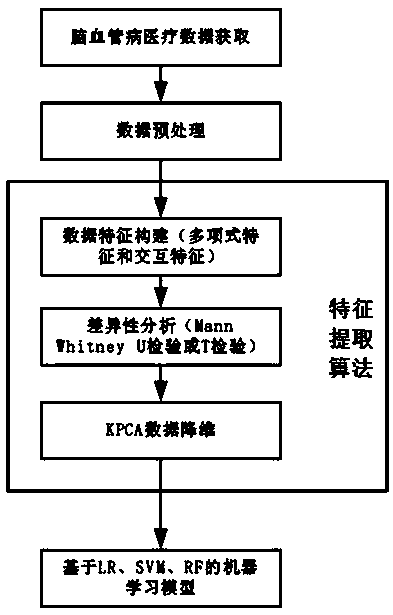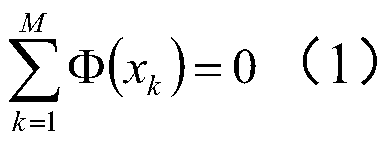Cerebrovascular disease neurological function damage degree prediction model based on kernel principal component analysis and polynomial characteristics
A technology of nuclear principal component analysis and damage degree, which is applied in computing models, character and pattern recognition, medical simulation, etc., can solve problems such as mining data from the angle of no features, relying on the performance of integrated learners, etc.
- Summary
- Abstract
- Description
- Claims
- Application Information
AI Technical Summary
Problems solved by technology
Method used
Image
Examples
Embodiment Construction
[0028] A kind of prediction type of neurological damage degree of cerebrovascular disease based on nuclear principal component analysis and polynomial features, the steps are as follows:
[0029] 1. Data acquisition: Obtain medical structured data of all cerebrovascular disease patients in the big data platform, including continuous data and string data.
[0030] 2. Data preprocessing:
[0031] 2.1. String conversion: For all string type data, binary variables are converted into 0, 1 data, and multi-category variables are first converted into continuous variables and then into discrete variables. For example, in the past history, a history of hypertension is converted to a value of 1, and no history of hypertension is converted to a value of 0.
[0032] 2.2 Handling of missing values and outliers in data: For data that are abnormal and deviated from normal values, they are deleted by default or treated as missing values. For missing data, discrete variable features are fil...
PUM
 Login to View More
Login to View More Abstract
Description
Claims
Application Information
 Login to View More
Login to View More - R&D
- Intellectual Property
- Life Sciences
- Materials
- Tech Scout
- Unparalleled Data Quality
- Higher Quality Content
- 60% Fewer Hallucinations
Browse by: Latest US Patents, China's latest patents, Technical Efficacy Thesaurus, Application Domain, Technology Topic, Popular Technical Reports.
© 2025 PatSnap. All rights reserved.Legal|Privacy policy|Modern Slavery Act Transparency Statement|Sitemap|About US| Contact US: help@patsnap.com



